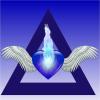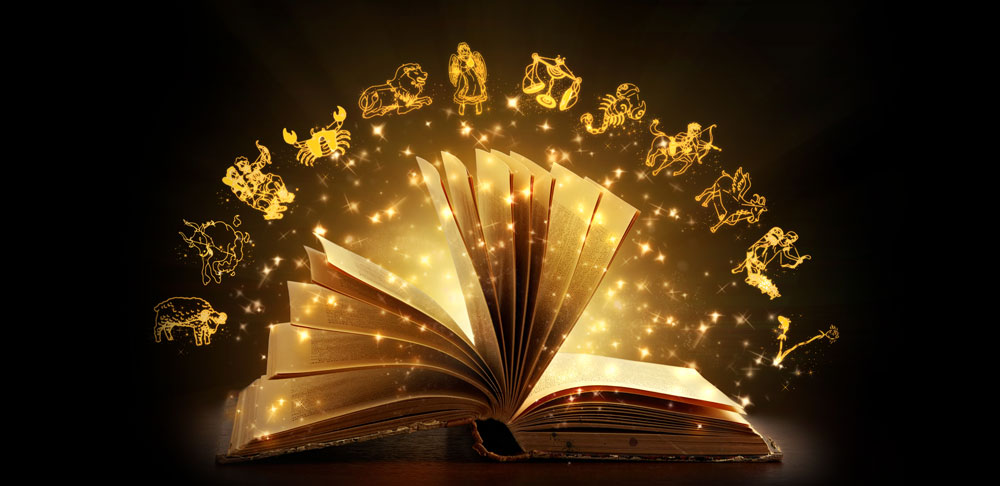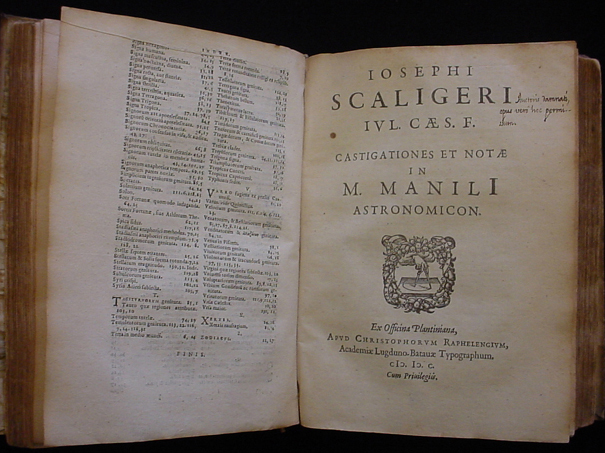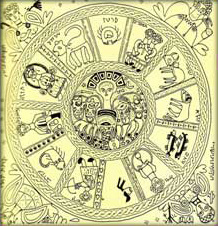 Submitted by LOGOS - Overseer on
Submitted by LOGOS - Overseer on

From the very beginnings of human comprehension there have been those who sought to suppress any knowledge that challenged the orthodox thinking of the contemporary establishment. Libraries have been burned, books have been banned, scholars crucified at the stake.
Astrology was never truly occult. It was actually practiced openly in biblical times and evidence shows it was a tool used by the ancient civilizations starting in Babylonia. It was not created as an occult science, because it was never hidden or secret on its own. The Christian Church actually transformed astrology into something that was considered taboo, supernatural and mysterious. – Carmen Turner-Schott
The word “occult” actually means, beyond the realm of human comprehension, hidden from view, concealed, available only to the initiate, and secret. The realm of the unknown imponderables is the Universal – the infinite ocean of something yet nothing which Science created in its frantic endeavor to account for the material phenomena of the real world. For a time, Science was pleased with its own peculiar offspring until it became frightened of its own child. In contemporary times Science tries in vain to slay its own creation which lingers like a querulous specter on the fringes of reality and reasonable thought … the fodder of philosophies.
Thus we come down to the occult associations of astrology. These have to be put into the perspective of history and the tools available at the time. Here are some bits and bytes of ancient thought you might find amusing. So let’s astrologize the ancient way …
Naronia
In a particular occult philosophy, Naronia is an important cycle in the human soul governed by astrological forces. Each year when the Sun transits the point it occupied at the time of the individual’s birth, the life energies and potentials of that individual are held to be reenergized. Each month when the Moon transits the same point in the heavens, those energies and potentials are magnetized and filled with magical energies. It was believed that magical workings done by magicians at that time of this solar-lunar interaction were particularly effective for inner development.

Planetary Intelligences
In the lore of ceremonial magic, there are seven beings associated with the seven ancient planets of Astrology which also rule over the seven planetary spirits. In some traditional sources, the intelligence of each planet is described as good while the spirit is considered evil; in others, the spirit is simply a blind force which requires the guidance of the intelligence if it is to accomplish good.
Saturn – Agiel
Jupiter –Iophiel
Mars – Graphiel
Sun – Nakhiel
Venus – Hagiel
Mercury – Tiriel
Moon – Malkah be-Tarshishim ved-al Ruachoth Shechalim
Note that the Moon is governed by multiple intelligences (collective intelligences of the Moon.
Planetary Spirits
Seven spiritual beings associated with the seven ancient planets and subordinate to the planetary intelligences. The seven planetary spirits were often invoked in geomantic divination. The origin or Geomancy is uncertain. A likely source is sub-Sharan Africa where a wide range of binary divination systems ranging from one to eight numbers has been used for centuries. Geomancy first appeared in written sources in Arabic North Africa circa the ninth century C. E. . It passed to medieval Europe with the first translations in Latin from Arabic in the twelfth century. It was one of the most popular divination systems in the late Middle Ages and Renaissance until the Scientific Revolution. Name is accompanied by its magical number assignment by Agrippa in parenthesis.
Saturn – Zazel (45)
Jupiter – Hismael (136)
Mars – Bartzabel (325)
Sun – Sorath (666)
Venus – Kedemal (175)
Mercury – Taphthartharath (2080)
Moon - Chashmodai (369)
Spirit of Spirits – Shad Barshemoth ha-Sharathan
Note that again the Moon is governed by multiple spirits of which Chashmodai is the most important. Shad Barshemoth ha-Shartathan is the spirit of spirits or collective personality of the spirits of the Moon.
Planetary Names
The Greek names for planets often appear in astrological and some classic literature. The names listed here come courtesy of Firmicus Maternus.
Moon – Selene
Mercury – Stillbon … “the gleaming one”
Venus – Phosphoros… “the light bearer”
Sun – Helios
Mars – Piroesis … “the fiery one”
Jupiter – Phaethon … “the bright one”
Saturn – Phainon … “the shiny one”
Astrolatry
There are those out there who worship stars as divine beings and believe that when they die they will become a star. This is actually an ancient belief taken to the extreme based upon the previous explanations of planetary intelligences and spirits.

Astronomicon
This term is usually used in reference to one of the chief early Latin works on astrology, namely, a poem in five books (unfinished) by poet-astrologer Manilius written during the period spanning the reigns of Augustus and Tiberius. The text is colored by Greek mythology and has indeed become a standard for popular star-lore legends (it was the Greeks who modern astrologers believed to have personalized astrology): the astrological material is said (on dubious grounds) to be based on the works of Asclepiades of Myrlea. The astrological systems of houses linking human affairs with the circuit of the zodiac have evolved over the centuries, but they make their first appearance in Astronomicon. Two manuscripts of Astronomicon made in the 10th and 11th centuries lay hidden in monasteries, one at Gembloux in Brabant (now in Brussels) and another that has come to rest in the library at Leipzig.
Ancient Astro Tarot Associations
The many different divinatory systems of Tarot usually proclaim a relationship with astrology especially with regard to the zodiac and constellations. The correspondences in the table below are an example set forth by Oswald Wirth. The truth is any attempts to link any Tarot deck with the zodiac and constellations are based on little esoteric knowledge which may come as a shock to those who read and rely on the Tarot.
CARD NUMBER | NAME | SIGN | CONSTELLATION |
0 | The Fool | NA | Cepheus, Little Bear |
1 | Juggler | Taurus | Orion |
2 | Lady Pope | NA | Cassiopeia |
3 | Empress | Virgo | NA |
4 | Emperor | NA | Hercules, Corona Borealis |
5 | Pope | Aries | NA |
6 | Lovers | Sagittarius | Aquila, Antinous |
7 | Chariot | NA | Great Bear |
8 | Justice | Libra | NA |
9 | Hermit | NA | Bootis |
10 | Wheel of Fortune | Capricorn | NA |
11 | Force | Leo | NA |
12 | Hanging Man | NA | Perseus |
13 | Death | NA | Draco |
14 | Temperance | Aquarius | NA |
15 | The Devil | NA | Auriga |
16 | House of God | Scorpio | Ophiuchus |
17 | The Star | Pisces | Andromeda |
18 | The Moon | Cancer | Canis Major + Minor |
19 | The Sun | Gemini | NA |
20 | Judgment |
| Cygnus |
21 | The World | Entire Planisphere + Polar Star | NA |
Astrotheology
There is scarcely a system in astrology that has not attempted to establish its own list of biblical or even theological correspondences. Some available literature may be observed in the Rosicrucian tradition (Boehme) or in the Christological assumptions developed by Dee in his magical sigil of the MONAS. In some astrological systems, associations have been drawn between the twelve signs of the zodiac and the twelve Apostles, the twelve tribes of Israel and the twelve stones on the breastplate of the high priest, while the Angels of the seven churches are often interpreted to planetary terms, but there are too many variations in such lists to draw valid conclusions to them. However, certain works of art in the medieval period do evince physiognomies in the portraits of disciples which are rooted in astrological lore. The association of Judas with Scorpio is the most consistent. The specific symbolism and correspondences established in theological and astrological literature between signs, planets and biblical references is too complex to be examined in this article but it is sufficient to note the ancient connection between Christ and Pisces due to communality of the image of the fish which is part of the pre-Christian ethos relating to a coming Messiah. In this category falls the association between the Virgin Mary and the celestial Virgo that gave rise to a crop of symbolism which survived into the 16th century. The speculation regarding the Star of Bethlehem and the Magi, the Zarathustrian initiates who are wrongly called astrologers in popular have also played a prominent part in this literature. There appears to be no adequate and comprehensive study of this subject in biblical astrology though passing references in Blavatsky, Testa, Steiner and Massey are notable.

The Lunar Zodiac
Did you know that here is a Lunar Zodiac that some archeologists believe predates any Solar Zodiac of antiquity? The Lunar or "Moon Zodiac" or “Psychic Zodiac” has been proposed by several researchers including American James Vogh. His greatest piece of evidence is a mosaic tile (pictured above) from a Jewish Gnostic synagogue, Beth Alpha, in Jezreel Valley in Israel. The tile depicts the regular Solar signs as they are understood by most cultures however Vogh claims the tile has been obviously altered to eliminate a thirteenth section and sign that he believes fell between the signs of Taurus and Gemini. In the middle of the tile sits a spider like depiction of Arachne a Cretan spider goddess with thirteen items in her headdress and the Moon over her left shoulder. Vogh claims that this is the 13th sign of the Moon Zodiac. He goes on further to state that this spider goddess, the well known Moon goddess of folklore and the universal Earth mother are one and the same.
The Music Of The Spheres
Astrological history is full of the genius of Johannes Kepler for it was Kepler who formulated the extraordinary laws that govern planetary motion. His work shows a mystical union of numerological and scientific thought. Like the greats before him such as Plato and Pythagoras, Kepler believed the world was ruled by numbers. It was Kepler who worked diligently to prove that the distances of the planets from the Sun coordinated with the Five Solids of Euclid. He also believed that musical harmony when mathematically expressed was the same as the harmony of the spheres (planets). He said, “I affirm and demonstrate that the movements of the planets are modulated according to harmonic proportion.” Kepler believed that each planet “sings” a harmonic tune and that by calculation involving the angle it describes in a day (as seen by the Sun) he could work out each planetary tune. Earth’s tune for example is mi-fa-mi which according to Kepler meant, “… in this our domicile misery and famine obtain.” Musical accompaniment for the seven known planets in Kepler’s time are Sun: “D”=D-F#-A-D, Moon: “F”=F-A-C-F, Mercury: “B”=B-D#-F#-B, Venus: “E” =E-G#-B-E, Mars: “C”=C-E-G-C, Jupiter: “A”=A-C#-E-A and Saturn: “G”=G-B-D-G. In the 1940’s occultist C.C. Zain extrapolated that Uranus, Neptune and Pluto “vibrations” belonged to Divine Consciousness and the song of the Cosmos and therefore had no particular tones.
- 5129 reads